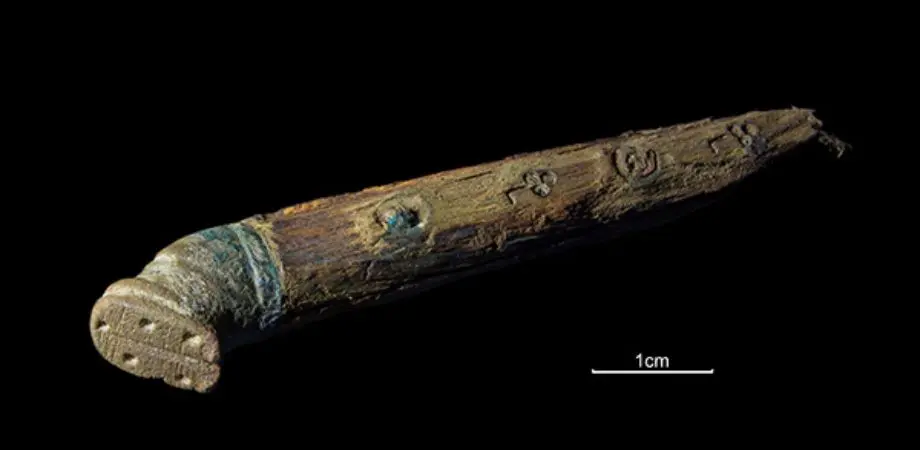Late one Friday afternoon (everyone knows that the best finds are always late on a Friday afternoon!), I received an email from my colleague on site at Berwick. He included photos of a slightly muddy but otherwise well-preserved knife handle. As soon as I opened the photos, I was thrilled to recognise the find. Despite a significant quantity of iron corrosion from the tang, the artefact was easily recognisable as a late 15th – 16th century scale-tang knife handle with a hoof-shaped end-cap.
The object in question had been recovered from the fill of a pit, one of a large group in the area which seems to have seen an intense period of waste deposition. As we discovered, the pit in which the knife handle was found was cut into a slope to the north-east of a large mettled surface (i.e. a hard surface, such as a road in which large and small bits of stone have been tamped down). Evidence in the form of pottery at the location suggests a medieval deposition date. A spread of later material going down the slope may have contaminated the upper fills. This spread contained a jetton manufactured in Tournai, which provides a date of c.AD 1497–1547. This timeframe marries well with the generally accepted date range for knives of this form.
The knife handle was immediately placed in the fridge and conservation organised to stabilise both the metal and organic components. During this process, we removed the blooms of corrosion product, revealing further exquisite details on the handle. Although tiny, the hoof-shaped endcap is extremely detailed. The shoe is cleanly defined and includes plainly visible calkins and nails and a clear delineation between the lower parts of the horse’s hoof and fetlock. The handle is formed by D-sectioned wooden plates held in place by tiny copper-alloy trifoliate rivets. Unfortunately, the blade end of the handle as well as the blade itself did not survive.
What is unusual about the Berwick knife, and something that I had never dealt with before, is to have a find in which the endcap is still intact and correctly positioned intact on the tang, much less also accompanied by surviving wooden plates. The tiny trefoil rivets positioned along the handle are an additional joy as these are so fragile they tend to not survive, especially from within the plough zone.
As excavations in Berwick continued, we began to piece together a picture of the daily lives of the inhabitants of this uniquely contested town during a turbulent time. Although the knife would have been a relatively commonplace utensil, it grants a window into the changing fashions, international trade links and other aspects of the medieval and early post-medieval history of Berwick.
From the moment of opening my colleague’s initial email, following this artefact’s journey has, for me, been a little bit special. I vividly recall another Friday afternoon on which I pulled a lonely endcap (minus the rest of the knife) from a bag of finds brought in for recording as a PAS intern and being slightly puzzled by my first of what would be many encounters with such cute little hoofs. As a hand-held and everyday item, the preservation of the Berwick knife’s handle gives both archaeologists as well as those members of the public who may eventually see it on display a literal as well as a metaphorical handle on the past.
Read more about our discoveries in Berwick.





